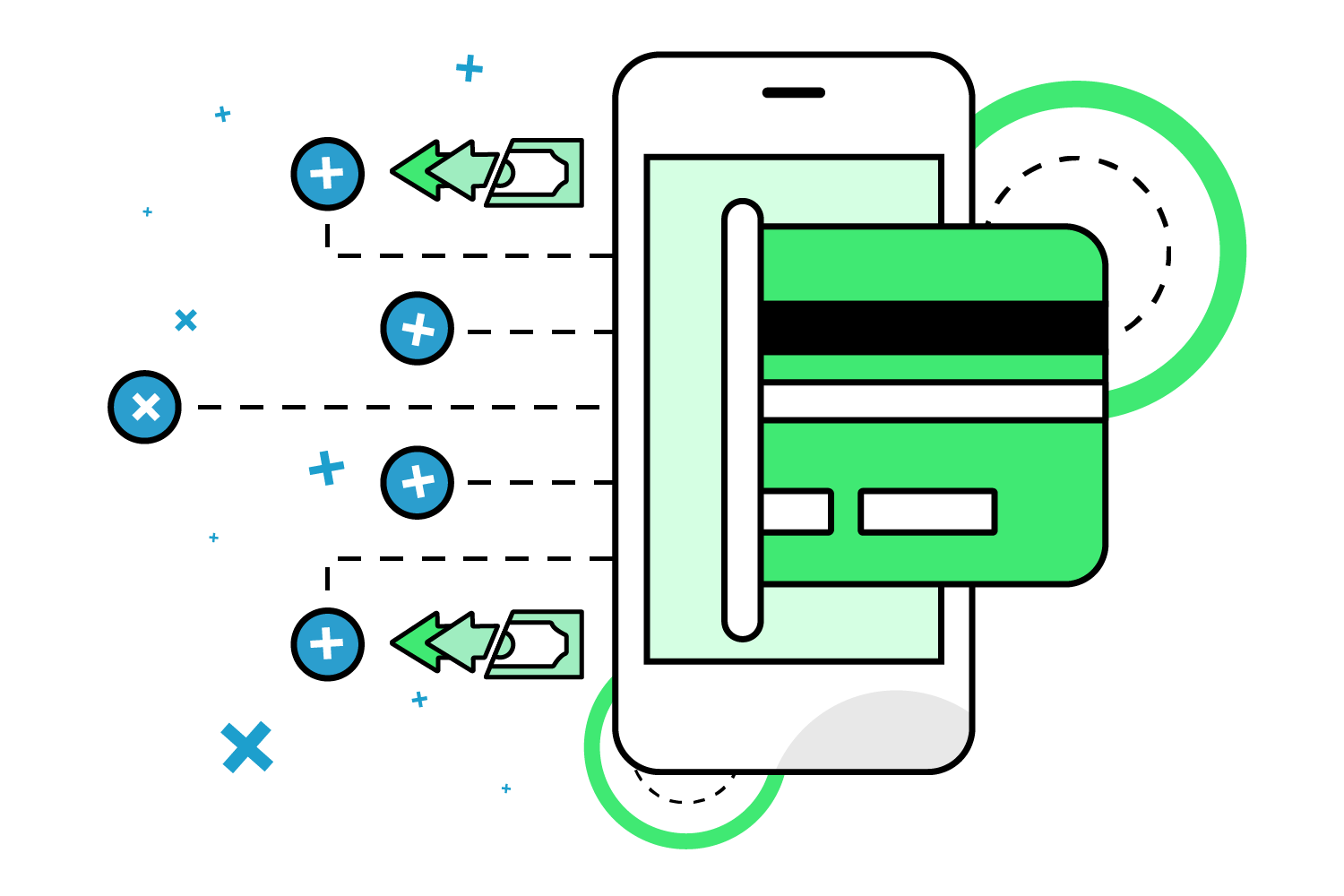Table of Contents
What Is Peer-to-Peer Lending and How Do Peer-to-Peer Loans Work?
Peer-to-peer lendings is a relatively new model of online lending in the financial services industry, but the idea behind this innovative form of fintech-based financing really isn’t that new at all. When we strip away the modern technology around some of the most successful peer-to-peer lending platforms that have launched in North America—platforms like Prosper and LendingClub—and really look at this financial service in its simplest form, peer-to-peer lending ultimately comes down to the act of one person borrowing money from another person, at a cost, with the agreement to pay them back within a certain period of time. There are no banks involved. You may have a question that ‘Is peer to peer lending safe’, let’s understand this in more detail. It’s really quite simple.
Maybe you borrowed money from a sibling when you were younger, just enough to buy yourself the latest copy of R.L. Stine’s Goosebumps at your local elementary school’s bookfair. If you did, you would have learned a valuable lesson that day—that you don’t get to borrow money for free. A loan—even a small one—almost always comes at a cost. In order for both the lender and the borrower to collectively benefit from any form of lending, some kind of fee, interest rate, or payment is generally involved in addition to an agreement that the borrower will repay the loan back in full. That’s traditionally how lending works.
Even when technology is involved, the fundamental concept behind lending money remains the same. Lending is based on an arrangement that’s mutually beneficial to both parties. Without a financial return, a lender is out of money for a period of time and stuck wondering, well, what’s in this for me? Lending amounts can be different, interest rates can be different, and payment terms can be different in any situation. The one thing that generally remains the same when it comes to lending is that the lender must feel like they’re making an investment—they’re exchanging money now with the expectation of receiving a return on that investment in the future.
Even your very own siblings were willing to take a quarter of your next allowance when lending out their money.
In fact, there’s a chance some of the homegrown businesses you see on the main streets of any Canadian small town were initially funded through some early form of p2p lending. Peer lending has been around for, well, about as long as banks have been denying loans to loan applicants and forcing those prospective borrowers to turn to people in their own communities for alternative financing—whether it was family or friends or even wealthy strangers.
That’s not to say traditional person-to-person lending doesn’t happen anymore—of course it does—but the term peer-to-peer lending was essentially redefined in the mid-to-late 2000s with the emergence of innovative financial technology companies focused on using modern apps and online platforms to connect strangers for the purpose of facilitating alternative financial services. After over decade of spin-off peer-to-peer lending fintechs funded by venture capitalists and moderate success that has led to at times multi-billion-dollar valuations, peer-to-peer lending has now come to evoke a specific model of fintech business that facilitates lending between people.
How Do You Define Peer-to-Peer Lending?
So, what is peer-to-peer lending? Peer-to-peer loans are a modern alternative lending model that leverages financial technology or fintech platforms to connect individual borrowers with individual lenders. Using a digital platform as an intermediary between borrowers and lenders, these peer-to-peer lending fintechs cuts out the bank or traditional financial institution, handling transactions and facilitating the funding and repayment of loans between borrowers and individual investors. It facilitates both long-term and short term peer to peer lending with safe and secure transactions.
Peer-to-Peer Lending Is a Type of Alternative Lending
Traditionally, consumers, entrepreneurs, and small business owners go to a bank when they need a loan. But any small business owner that has ever filled out a small business loan application at a Canadian bank and was denied will tell you that things don’t always go as planned.
When a loan application is denied by a bank, the next logical step for many consumers and small business owners is to seek out other financing options. This non-traditional financial services market that provides what is often referred to as “non-bank loans” is known as alternative lending—and p2p lending is one of the most popular forms of alternative lending today.
A Brief History and Understanding Into Peer-to-Peer Lending
The very first modern peer-to-peer lending platform in the world was created by Zopa, a pioneering fintech that initially launched in the United Kingdom back in 2005. It was quickly followed by several peer-to-peer fintech startups that emerged in the United States only months later, particularly in California and New York. Those first US-based peer-to-peer lending fintechs included Prosper, which was founded in 2005, and LendingClub, which emerged shortly after, in 2006, initially launching as a social lending solution and one of Facebook’s first applications.
Backed by venture capital funding, early peer-to-peer lending fintechs launched exclusively online believing that they could leverage technology and an intuitive online origination process in order to match investors with borrowers and fill in what they saw as a gap in the alternative lending market—a market that, at the time, was considerably littered with high-interest payday loans and had a deeply rooted reputation for being, well, shady.
The emergence of the new online-only, peer-to-peer lending model was unquestionably influenced by the mass adoption and growth of popular social networks at the time, as Facebook and Twitter user growth began to skyrocket and users began to establish trust with the platforms, finding a new level of comfort with technology and sharing private information online. The peer-to-peer lending model—sometimes referred to as “social lending” or “crowd lending”—allowed these early fintech startups to keep overhead costs low while attempting to get established.
The first major challenges came from the peer-to-peer aspect itself, as startups initially struggled to find not only lenders willing to invest but also credit-worthy borrowers in the early days of operation. According to Bednorz writing for P2P Market Data, the turning point for these early players ironically came as a result of the financial crisis of 2008:
“Public confidence in financial institutions collapsed. So did the credit supply as many banks run (sic) into serious survival issues. Quite suddenly, large numbers of individuals and businesses found themselves unable to secure a loan, small and medium enterprises (SMEs) facing particular difficulties. At the same [time], investors were turning away from conventional banking products and increasingly looking for alternative solutions that could yield higher returns” (Bedorz).
The success of early platforms like Zopa and Prosper spawned hundreds of subsequent fintech startups over the next decade, and effectively helped redefine the alternative lending landscape. These early pioneers in online alternative lending have since expanded their financial service offerings, making critical tweaks to their lending models which has resulted in the emergence of a similar peer-to-peer lending model known as marketplace lending—a model of peer-to-peer lending that allows institutions to invest on the platform, as well. In the process, these peer-to-peer fintechs have helped create a global peer-to-peer lending market worth over USD $68 billion, a number which is expected to grow 30 percent by 2027.
In 2020, the success of peer-to-peer lending even led to the first fintech acquisition of a US bank in the United States with the LendingClub’s purchase of Radius Bank.
Peer-to-Peer Lending Is Contributing to a Shift in the Way Financial Services Are Delivered to Consumers
Peer-to-peer lending is a perfect example of how financial technology is changing the way financial services are delivered to consumers. These peer-to-peer fintechs have proven that technology and innovation in the alternative lending space can uncover financial opportunities not just for borrowers and investors but also for financial leaders that have the vision and determination to challenge the traditional lending model.
By providing an alternative source of affordable credit for borrowers, peer-to-peer lending fintechs make financing accessible to those that have either been denied funding from a traditional bank or are simply looking for streamlined access to a loan online. For investors, they offer an opportunity to receive a better return on an investment, providing a higher interest rate than a guaranteed investment certificate (GIC) or term deposit offered by a traditional bank.
Leveraging technology to improve returns on capital for investors and lower interest rates for borrowers seeking access to affordable, alternative source of credit has allowed these fintechs to establish a unique and reputable digital financial solution in the alternative lending market.
They may not be the ideal lending solution for most consumers—but they wouldn’t charge you 25% on that bookfair loan.
Sources:
https://www.businessinsider.com/alternative-lending-nonbank-industry (Retrieved July 28, 2021)
https://www.cnbc.com/2020/02/18/lendingclub-buys-radius-bank-in-first-fintech-takeover-of-a-bank.html (Retrieved August 3, 2021)
https://www.investopedia.com/articles/financial-theory/08/peer-to-peer-lending.asp (Retrieved August 3, 2021)
Comments are closed.



